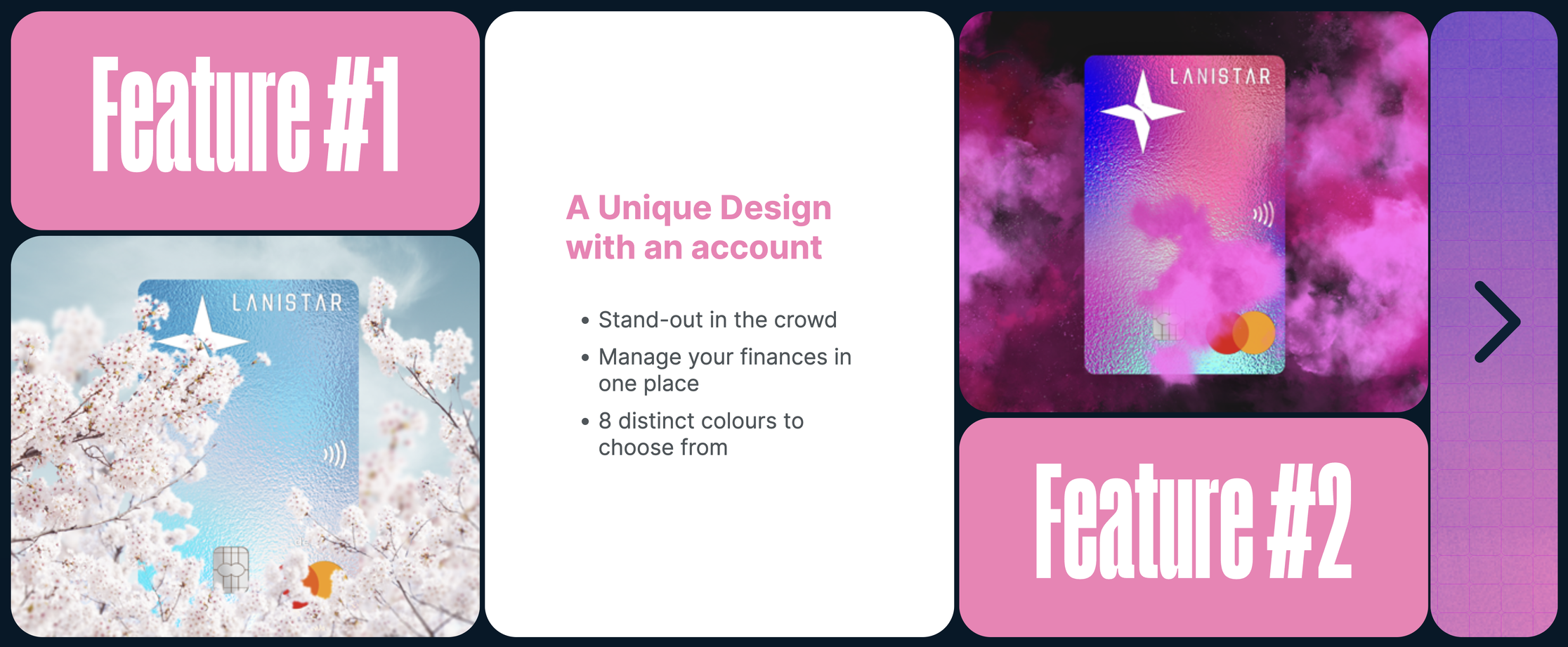Jeremy Baber, CEO of Lanistar

Today we’re meeting Jeremy Baber, CEO of payment card provider Lanistar.
Who are you and what’s your background?
My name is Jeremy Baber and I am the CEO of payment card provider Lanistar.
My 30+ years of international experience have equipped me to bridge the gap between mission and day-to-day business processes, translating goals into action. With a proven track record and unwavering commitment to operational excellence, I am excited to steer Lanistar towards new horizons in the fintech sphere.
As a certified Lean Six Sigma Master Black Belt, I have spearheaded enterprise-wide transformations, resulting in substantial cost reduction and productivity enhancement in Operations, Contact Centres, Financial Services and Manufacturing. Partnered with a comprehensive understanding of FCA, PRA and GC regulatory compliance, I am able to meet and tackle any challenges that lie ahead, whilst maintaining the highest standard of service delivery.
As passionate about people as I am about progress, I am committed to nurturing the next generation of talent in our field. I believe in building high-performing teams and guiding their professional development to cultivate the leaders of tomorrow.
What is your job title and what are your general responsibilities?
As the CEO of Lanistar, I am responsible for the day-to-day operation of the business, including the planning and implementation of our LATAM launches.
Can you give us an overview of your business?
Lanistar is a payment card provider currently operating in Brazil, with plans to expand into the rest of LATAM, UK and other key global markets. Through the Lanistar app, we provide our customers with access to all their financial products in one place. With a variety of virtual card designs, we make controlling your money easy.

Tell us how you are funded?
Lanistar is self-funded by founder, Gurhan Kiziloz
What’s the origin story? Why did you start the company? To solve what problems?
Our founder Gurhan’s expertise lies in marketing. He recognised a gap in the market catering to Gen Z and Millenials, who often find themselves underserved by traditional high street banks. Lanistar’s Payment Card solution was created to bridge this gap, offering customers the freedom of Internet banking on the go.
Who are your target customers? What’s your revenue model?
Our target customers are Gen-Z and Millennials (18 years – 35 years).
If you had a magic wand, what one thing would you change in the banking and/or FinTech sector?
I would like to see a greater representation of female talent and leadership in the fintech space. It has become increasingly evident that the fintech gender gap needs closing in order for the industry to reach its full potential. Organisations need to take it upon themselves to ascertain why their workforce is so male-dominated and what can be changed in their business models to be more inclusive of and appealing to women.
Not only is the workforce short of women but also the senior leadership team, exemplified in a Cambridge study, which found only 4% of CEOs to be women and 18% of executive committee members.
What is your message for the larger players in the Financial Services marketplace?
Ignoring the impact and power of Gen Z and Millenials in the financial services sector would be an oversight. The dynamicity and purchasing power of the younger generations represent the future of consumer finance for at least the next 50 years.
Where do you get your Financial Services/FinTech industry news from?
LinkedIn is my go-to source for fintech news, industry movements and case studies. On the whole, the UK is home to a fantastic fintech media space – so I’m never out of the loop when it comes to all things fintech. Remaining informed, more widely, on current affairs and news within the regulatory space is definitely essential in preparing for new legislation and compliance.
What FinTech services (and/or apps) do you personally use?
I use a wide range of fintech apps from banking and insurance services to credit scores and cryptocurrency management. I run these all from my smartphone, which is fast, easy, and in my opinion, safer.
What’s the best new FinTech product or service you’ve seen recently?
Sibstar founded by Jayne Sibley who appeared on Dragon’s Den and secured a £125,000 total investment from both Sara Davies and Deborah Meaden, is one example of the fantastic advancements in inclusive banking technology.
Making serious headway in improving banking for the underserved groups of society, Sibstar supports those affected by dementia, featuring a pre-loaded debit card and app, from which funds and cashflow can be allocated, overseen and managed. Check them out at https://www.sibstar.co.uk.
Finally, let’s talk predictions. What trends do you think are going to define the next few years in the FinTech sector?
AI
AI development will have the biggest impact across the fintech industry, maximising customer experience and data security, helping the sector grow. Much has been made of the capabilities and limitless potential of artificial intelligence. From threatening our jobs to powerful new solutions – AI is reshaping every sector. Yet, proposed AI regulations planned for this year are poised to further disrupt the payments industry.
AI undoubtedly improves customer experience, and any proposed regulation will have to preserve, rather than damage the service it offers customers. AI developments enhance credit and application approval processes to streamline the customer journey. Once again, it is crucial for regulation to not be overly bureaucratic or act as a hurdle for fintech’s to negotiate. Instead, regulation must sure-up trust amongst businesses and users whilst at the same time allowing the power of AI to continue improving the customer experience.
BoT
The Banking of Things (BoT) will be much more accessible and scalable for the fintech industry over the next few years. With the development of cloud computing, the broad adoption of mobile technologies, the digitisation of payments and the increasing number of smart devices consumers have access to.
This emerging trend has the potential to create a range of possibilities for consumers and banks alike. In 2024, for fintech to benefit from BoT, device manufacturers and leading tech developers must work together to standardise and improve IoT practices to pave the way for BoT. Rising inflation and economic instability in 2023 have forced fintechs to enhance customer centricity and innovation while prioritising cost efficiency and profitability over rapid growth.
Sustainability
Last year, fintech demonstrated that it was a leading contributor to sustainability initiatives tackling the climate crisis, but it is imperative that it also leads by example in addressing its own carbon footprint issues.
The fintech industry must embrace the value of sustainability and continue to steer clear of greenwashing. Over the next few years, governments must support fintech development to allow for a move away from legacy (resource-heavy) services and encourage the industry to support green businesses through loans/credit with preferential rates and other incentives. With government support, fintech can take a step in the right direction concerning sustainable practices.




